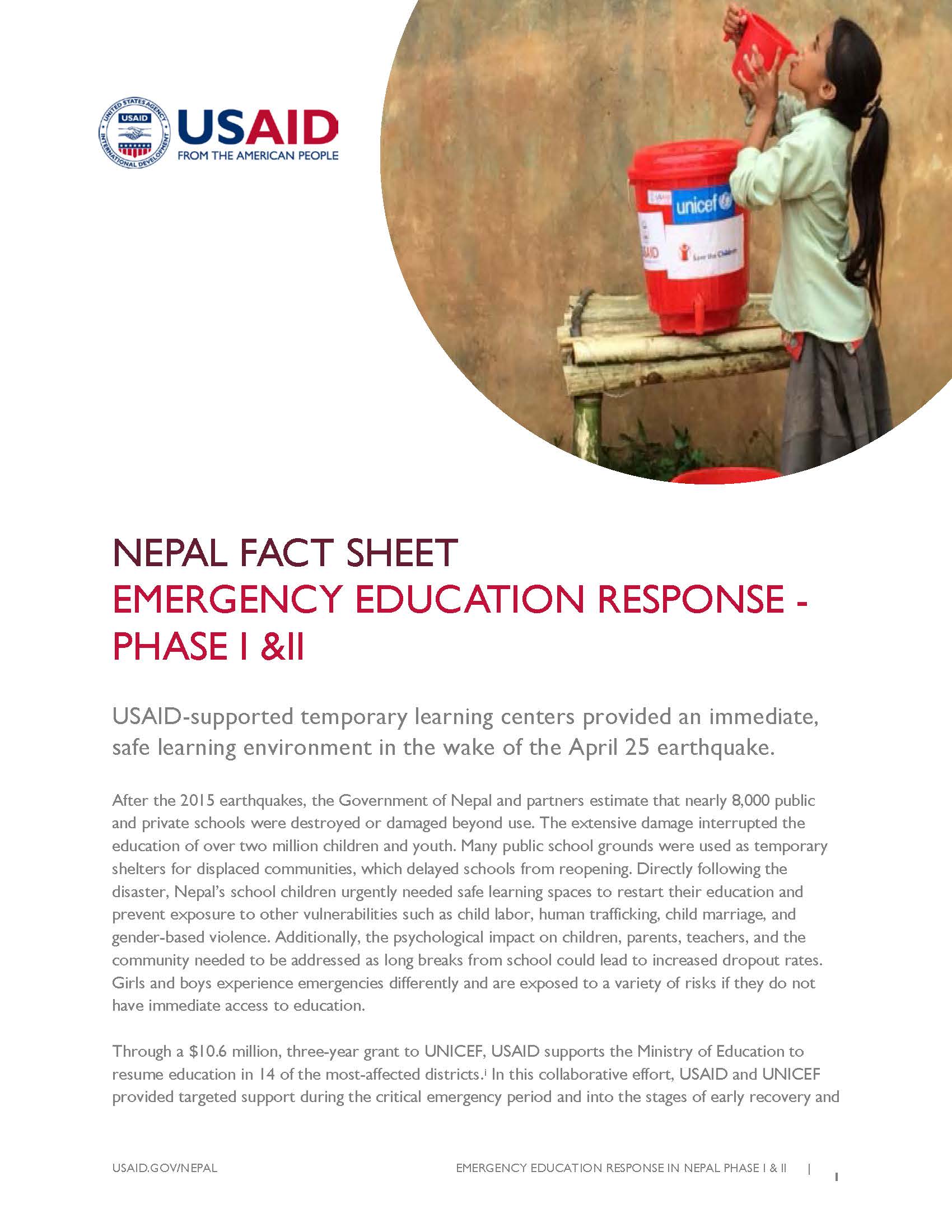USAID-supported temporary learning centers provided an immediate, safe learning environment in the wake of the April 25 earthquake.
After the 2015 earthquakes, the Government of Nepal and partners estimate that nearly 8,000 public and private schools were destroyed or damaged beyond use. The extensive damage interrupted the education of over two million children and youth. Many public school grounds were used as temporary shelters for displaced communities, which delayed schools from reopening. Directly following the disaster, Nepal’s school children urgently needed safe learning spaces to restart their education and prevent exposure to other vulnerabilities such as child labor, human trafficking, child marriage, and gender-based violence. Additionally, the psychological impact on children, parents, teachers, and the community needed to be addressed as long breaks from school could lead to increased dropout rates. Girls and boys experience emergencies differently and are exposed to a variety of risks if they do not have immediate access to education.
Through a $10.6 million, three-year grant to UNICEF, USAID supports the Ministry of Education to resume education in 14 of the most-affected districts.[i] In this collaborative effort, USAID and UNICEF provided targeted support during the critical emergency period and into the stages of early recovery and continues to provide a strong response to children’s education needs while permanent schools remain under construction.
PHASE I: SAFE LEARNING SPACES SECURED
Phase I of the grant addressed emergency needs over the first year directly following the disaster. It supported four sub-partner organizations to establish 1,045 Temporary Learning Centers (TLCs) that provided education to more than 93,000 students, as well as learning materials and school supplies to over 270,000 children. USAID-supported TLCs included temporary water and sanitation facilities, early childhood development school supplies, teaching and learning materials, recreational kits, and teacher training on providing psychosocial support to students and parents. Funding also supported the coordination of the humanitarian response and information management through the Education Cluster, and compiling lessons learned from the emergency period.
PHASE II: DURABLE SOLUTIONS FOR INCREASED RESILIENCE
As Nepal now moves toward long-term reconstruction, Phase II will provide more durable solutions in the recovery stage. Funds will support the construction of 250 transitional learning structures, made of steel and concrete, with gender-sensitive water, sanitation, and hygiene (WASH) facilities; educational and recreational supplies; training for teachers on childhood psychosocial support, disaster risk management, school safety, and hygiene promotion; and district and community engagement to facilitate local recovery and reconstruction efforts. Building on the lessons learned from the emergency response, Phase II will have an increased focus on community engagement by supporting the local use of data for decision-making to ensure more durable solutions in the recovery stage.








Comment
Make a general inquiry or suggest an improvement.